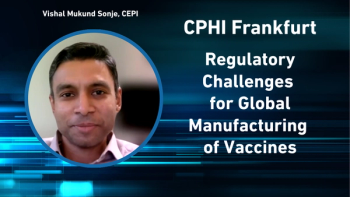
Presidential Advisory Council Says Vaccine Production for Pandemic Preparedness Needs to Be Improved
The President's Council on Advisors on Science and Technology (PCAST), a group administered by the federal Office of Science and Technology Policy (OSTP), issued recommendations to improve the country's ability to accelerate vaccine production and delivery in the event of a pandemic flu outbreak.
The President’s Council of Advisors on Science and Technology (PCAST), a group administered by the federal Office of Science and Technology Policy (OSTP), issued last week recommendations to improve the country’s ability to accelerate vaccine production and delivery in the event of a pandemic flu outbreak. PSCAT reviewed the US H1N1 influenza preparedness at the request of President Barack Obama in the aftermath of the 2009–2010 H1N1 pandemic.
The
, Report to the President on Reengineering the Influenza Production Enterprise, provides a roadmap, to be implemented during the next one to three years, for increasing the country’s ability to produce vaccines in a timely fashion. The report also recommends improvements for speeding production of other medical countermeasures against infectious diseases that could occur naturally or as a result of a biological attack.
PCAST cited weaknesses in vaccine production in meeting the timely delivery of H1N1 influenza doses. During the course of the two-stage outbreak, the time between the declaration of a need for a vaccine and the start of the second US wave of the pandemic was 18 weeks, but initial doses were not available until 26 weeks after that declaration, according to an OSTP
. Moreover, sufficient doses to cover half the population were not available until the 38-week mark. In all, the report said that production was three to five months slower than it should have been.
The report recommends five areas-surveillance, seed viruses, sterility tests, potency-test reagents, and fill–finish capabilities-that can be improved during the next one to three years and the federal agencies that should be involved in those improvements. The specific recommendations and responsibility for federal agencies are as follows:
• Accelerate identification of newly emerging pandemic viruses, so vaccine production can start sooner (Centers for Disease Control and Prevention)
• Develop a collection of stock viral backbones to allow faster production of specific vaccine strains (National Institute of Allergy and Infectious Diseases and the Biomedical Advanced Research and Development Authority (BARDA))
• Develop better and faster tests to ensure sterility during vaccines production (BARDA and US Food and Drug Administration)
• Document faster and more reliable tests to document vaccine potency (BARDA and FDA)
• Enlarge capacity and modernize machinery used in the final stages of vaccine production, including vial-filling (federal agencies in collaboration with manufacturers).
For longer-term goals, the report offered four recommendations:
• Move away from egg-based to cell-culture-based vaccine production
• Expand the use of live, weakened, or attenuated viruses instead of killed viruses in vaccine production, which would produce a greater number of vaccine doses from an equivalent amount of live virus material
• Develop recombinant vaccines to allow for more effective scale-up of vaccine production
• Continue research into the use of adjuvants to allow smaller amounts of virus material to be used per dose of vaccine.
The report also recommended the development of a new management structure that vests authority with the Assistant Secretary for Preparedness Response (ASPR) at the Department of Health and Human Services (HHS) to coordinate and task components at HHS for implementing the recommendations. Also, the report suggests creating a smaller advisory committee within HHS, comprised of representatives from the biotechnology, pharmaceutical, and investment communities, to guide HHS’s engagement with industry and that a component of the Executive Office of the President such as the National Security Council, assume overall responsibility for the initiative. The report said that a federal investment of $1 billion or more annually for several years is justified on a cost basis to achieve these objectives.
See related story,
Newsletter
Get the essential updates shaping the future of pharma manufacturing and compliance—subscribe today to Pharmaceutical Technology and never miss a breakthrough.





